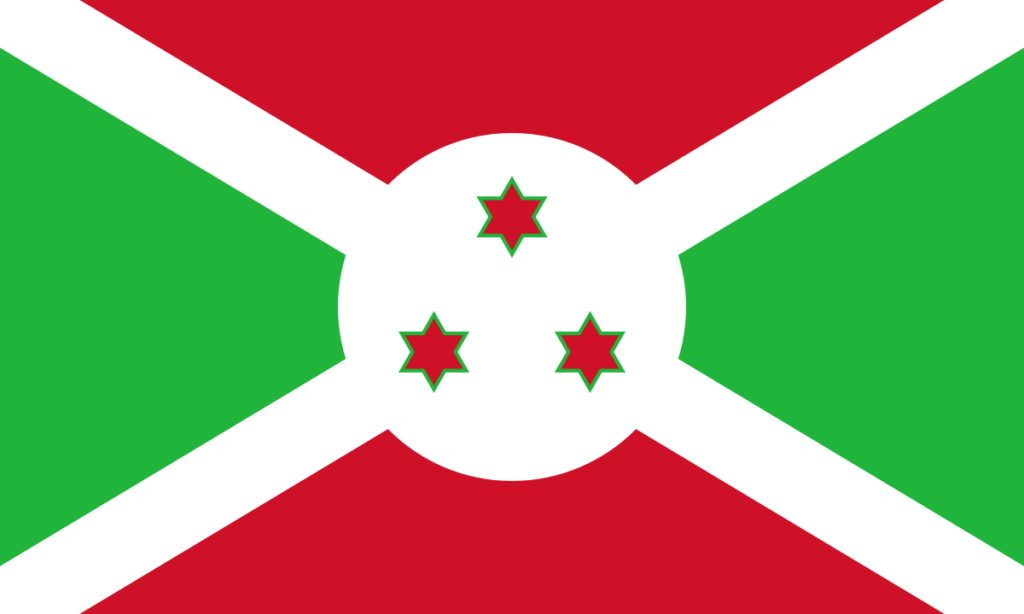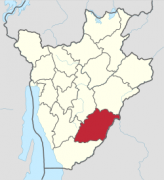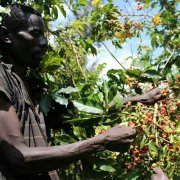Brief introduction of Burundian Coffee producing area of Starbucks Coffee beans Burundian Coffee History and unique washing treatment
Burundi has favorable conditions for growing coffee at different elevations throughout the country. The lowest point is in Lake Tanganyika in the west, 772m above sea level, and the highest point is at the top of Mount Heha, 2670 m above sea level. As a result, most coffee is strictly SHG and SHB, and most coffee beans grow at an altitude of about 1200-2000 meters.
In addition, the perfect coffee growing environment benefits from 12000 mm of annual rainfall and nutrient-rich volcanic soil, adding flavor to the coffee.

Growth region
The following are some brief features of the main coffee-growing areas in Burundi.
BUYENZI
The northern part of Burundi bordering Rwanda is one of the main areas where large amounts of quality coffee can be found. The Cayenza and Ngozi regions deserve special mention in the Buyenz region.
KAYANZA
The area has a mild climate, with an average temperature of about 64 degrees Fahrenheit, and most farms are located between 1, 7,000 and 2, 000 meters above sea level.
The coffee produced under these conditions has high acidity and strong citric acid taste. Coffee from this area received a high SCA score and a score of 91.09 in the Excellence Cup.
NGOZI
Ngozi is located in north-eastern Burundi and has similar conditions and elevations, but its production is lower than that of the Kayanza region. Its quality is also excellent, with an impressive score of more than 85 by SCA.
MUYINGA, BWERU
The area is located in northeastern Burundi, bordering Tanzania, with an average elevation of about 1800 meters. It has a typical Burundian climate, mild climate, fertile volcanic soil and annual rainfall of about 1300 mm.
Bugesera, Kirundo
Kilondo, located in northeastern Burundi, produces very low coffee. However, these beans have quality potential. Most farms are between 1400 and 1700 masl, and coffee here scored 86.62 in the excellent cup in 2015.
Cibitoke
Located in the northwestern tip of Burundi, adjacent to the Democratic Republic of the Congo, the average elevation is 1450 meters. The harvest period is from April to July. Most of the coffee in the region is bourbon Jackson Mibrizi and some SL varieties.
Bubanza
The northern province borders Rwanda and the Democratic Republic of the Congo. It ranges from 1100 to 2000 masl above sea level and has an annual rainfall of 1100 mm. The temperature is quite consistent, between 18 °C and 22 °C. This area is located in the northwest of Burundi. The average elevation is about 1350 meters, and the harvest time is usually from April to July. Most of the coffee in the area is bourbon Jackson
Mibrizi and some varieties of SL system.
Kirundo
Located in the west-central part of Burundi, the average elevation is 1600 meters, the harvest time is also from April to July, and the varieties are the same.
Bujumbura rural
Located in the west of Burundi, the average elevation is 1400 meters, the harvest time and varieties are the same as other producing areas.
Krimiro
This is the center of Burundi, is a mountain area, the average temperature is between 12 and 18 °C. Rainfall is lower than in other parts of Burundi, about 1100 millimetres a year.
Mwaro
Another small producing area in central Burundi, with an average elevation of about 1700 meters, is harvested from April to July. Most of the coffee is bourbon Jackson Mibrizi and part of the SL system.
Muramvya
A small producing area in central Burundi with an average elevation of 1800 meters and harvested from April to July. The variety also belongs to the bourbon Jackson mibrizi SL series..
Makamba
One of the southern provinces of Burundi, with an average elevation of 1550 meters, is also harvested from April to July, and most of the coffee is bourbon Jackson Mibrizi and part of the SL system.
As mentioned earlier, Burundi is not an important participant in other major coffee producing countries, but it is still a country that grows and exports large amounts of delicious coffee. It is also included as part of Starbucks' reserve plan to raise awareness of the origin of the coffee.
History of Burundian coffee
Burundian flag. The three stars represent the three ethnic groups living in the country (Hutu, Tutsi and Tewa). The red on the national flag represents the struggle for independence, green represents hope, and white represents peace.

Coffee in Burundi Today, coffee and its success are crucial to Burundi's economy. Coffee is its main export, slightly higher than gold in value, with an estimated 600000-800000 coffee farmers involved in its production, with an average area of 0.12ha (think 110sq ft) and about 200 trees. If the farmer does not own the coffee tree, he or she will know the person who owns the coffee tree.
Coffee was introduced to Burundi in the 1930s by the Belgian who brought Arabica coffee seedlings. After independence in 1962, the coffee industry was privately run for more than a decade, during which time the quality and quantity of coffee produced were gradually eroded due to repeated political upheaval. The coffee industry was finally taken over by the state in 1976, with mixed results. From 1991 to 2008, the government established an auction system. In 2008, the World Bank led the privatization of the coffee industry, enabling private companies and cooperatives to own washing stations and dry mills that were previously owned by the State.
At present, the government has set a minimum cherry price to protect small farmers, but when the coffee market is as low as last year, cooperatives may struggle to meet their overall production costs. nevertheless, progress is still being made-a $55 million coffee project funded by the World Bank (the Coffee Industry Competitiveness support Project) began in 2016 by providing farmers with subsidies for fertilizers and pesticides and bicycle grants. Production increased by more than 15% between 2016 and 2018, training, motorcycles and vehicles to agronomists. Like neighboring Rwanda, the terrain of Burundi is very hilly-perfect for coffee trees to thrive-most coffee grows between 1200 and 2000 meters above sea level and is harvested between March and July.
Burundi currently has approximately 283 washing stations and 8 dry mills (privately owned and co-owned) throughout the country, but is concentrated in the northern and central provinces. Burundian washable coffee is also unique because they usually undergo "double fermentation" / "double washing" to produce unusually clean and delicious cups. The first cherry floats in a bucket or concrete basin, skimming the immature coffee, also known as "floating matter", then desizing and drying it in the tank for 12-24 hours; then cleaning n channels (putting different quality coffee into different cans according to density); finally, wet fermentation / soaking for 12 hours, then sorting and drying on an elevated bed according to weather conditions for 10-20 days. Coffee from Burundi is hard to beat.
Important Notice :
前街咖啡 FrontStreet Coffee has moved to new addredd:
FrontStreet Coffee Address: 315,Donghua East Road,GuangZhou
Tel:020 38364473
- Prev

What are the taste characteristics of Burundian coffee beans, Heart of Africa? Challenges to the coffee industry in Burundi
Burundi is a small mountainous landlocked country in east-central Africa located between Rwanda Tanzania and the Democratic Republic of the Congo. East Africa is famous for producing quality coffee, and Burundi is no exception. Although the production here is very small compared with other African countries, coffee farmers in Burundi pay great attention to detail. Burundi has the second highest per capita GDP in the world and is considered to be
- Next

Does the growing environment of Daquan coffee affect the quality and flavor of coffee beans growing countries and producing areas in the world?
The ideal conditions for the growth of coffee trees all over the world are located in the equatorial zone between 25 degrees north latitude and 30 degrees south latitude, known as the bean belt. Fussy Arabica coffee grows best in high-altitude fertile soil, while healthier robusta coffee prefers higher temperatures and thrives on lower ground. What affects coffee?
Related
- Detailed explanation of Jadeite planting Land in Panamanian Jadeite Manor introduction to the grading system of Jadeite competitive bidding, Red bid, Green bid and Rose Summer
- Story of Coffee planting in Brenka region of Costa Rica Stonehenge Manor anaerobic heavy honey treatment of flavor mouth
- What's on the barrel of Blue Mountain Coffee beans?
- Can American coffee also pull flowers? How to use hot American style to pull out a good-looking pattern?
- Can you make a cold extract with coffee beans? What is the right proportion for cold-extracted coffee formula?
- Indonesian PWN Gold Mandrine Coffee Origin Features Flavor How to Chong? Mandolin coffee is American.
- A brief introduction to the flavor characteristics of Brazilian yellow bourbon coffee beans
- What is the effect of different water quality on the flavor of cold-extracted coffee? What kind of water is best for brewing coffee?
- Why do you think of Rose Summer whenever you mention Panamanian coffee?
- Introduction to the characteristics of authentic blue mountain coffee bean producing areas? What is the CIB Coffee Authority in Jamaica?

